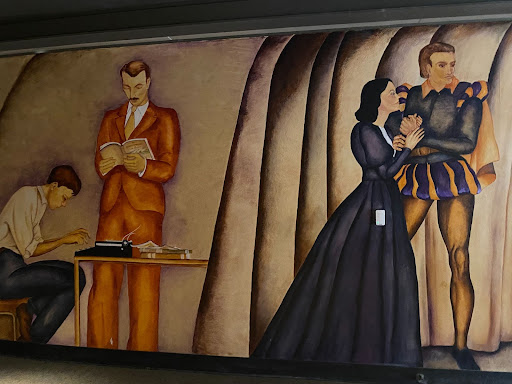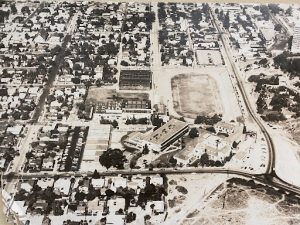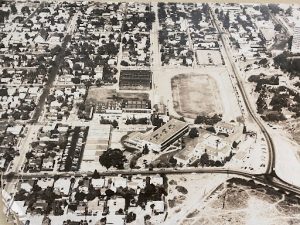How Has La Jolla High School Changed in the Past 100 years?

Recreated version of “The Seven Arts” Mural (demolished in 1975) dedicated to Belle Baranceanu (Photo via. Alizee Carey)
October 18, 2021
Everyday, students pass at least one of the La Jolla High School signs located across campus. Previously, the ‘est. 1922’ lacked major significance, however in the 2021-2022 school year, this is on the contrary. The upcoming 100-year-anniversary of La Jolla High can be seen as the most prominent commemoration of the school and community since its establishment. La Jolla High has changed drastically in the past century, which is evident through many factors including campus, academic, and community changes.
The most noticeable changes made to LJHS since 1922 are the campus modifications. For instance, there have been significant improvements made to the quality of the football field; as it was originally a simple dirt field. The addition of the Aquatic Complex increased the size of the school massively. Prior to the addition, the unoccupied space was used as a parking lot. This space was filled by the Coggan Pool in 2002. Even though there were beneficial additions, there were also unfortunate removals. For example, in 1975, the high school’s proscenium was demolished after being deemed unfit to withstand a seismic event, resulting in the loss of Belle Baranceanu’s “The Seven Arts Mural,” a mural, created in 1940, located over the arch leading to the stage. However, what remains is a dedication mural from the class of 1960 for Baranceanu located at the back of the auditorium.
Furthermore, there have been plenty of alterations in the courses offered at LJHS. For instance, some language courses that were previously offered were Japanese, French, and ASL. However, Mrs. Eaton, a teacher who has been at LJHS for 20 years, said, “when one program goes away, other new exciting ones take place. Academics have never faltered; the courses are still strong.” For example, the BioMedical Pathway program, which was added as a course option in 2015, has offered students with interests in the biomedical sciences field a chance to deepen their understanding of what the industry entails.
Originally, La Jolla High was only 10th-12th grade; 9th grade was offered at Muirlands. Thus, there were many additions in course selections when the extra grade was added to the high school, and the amount of students in the school increased.
Additionally, the La Jolla community has changed remarkably since 1922. From chalkboards to Promethean boards, and ancient textbooks to online instruction, the way of life can be seen as constantly changing. The current life of a high schooler is significantly more modern, technologically speaking, than the life of teens even 50 years ago. For example, as Jim Geddes, a La Jolla High alumni from the class of 1973 said, “When kids focused to connect, there were no iPhones or iPads, there was no such thing as Facebook or any social media sites, we just related face to face.” The educational methods for students today, in comparison to the early years of La Jolla High, have improved outstandingly, which is a direct reflection on the change in societal culture.
As La Jolla High continues to offer students a place to grow and learn, it itself will continue to change. The upcoming anniversary marks one full century of establishment, and it’s place in the La Jolla community has been proven to be essential to the education of its students for the past 100 years.



